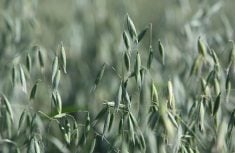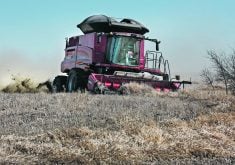Forages and companion crops
Forage seeded without a cereal companion crop grows better than one seeded with a cereal crop, according to research at the Agriculture Canada research station in Lethbridge, Alta.
Studies have shown grasses and alfalfa seeded alone have higher yields and fewer weeds compared to forages seeded with cereals. The beneficial effects of cereals in forages include reduced soil erosion, reduced weed growth and a cash return in the first year.
On the down side, there is reduced forage seedling vigor, decreased forage yield and increased weediness for two or more years after crop establishment.
Read Also

VIDEO: Green Lightning and Nytro Ag win sustainability innovation award
Nytro Ag Corp and Green Lightning recieved an innovation award at Ag in Motion 2025 for the Green Lightning Nitrogen Machine, which converts atmospheric nitrogen into a plant-usable form.
Federal researchers found in Alberta trials that a cereal companion crop in seedling alfalfa or bromegrass during the establishment year could reduce forage yields by more than 90 percent.
Yield reductions were less if the companion crop was harvested early for silage instead of being allowed to mature for grain.
The value of the companion crop for grain or silage may be greater than the value of the lost forage yield. However, for growers who are trying to produce forage with low weed content for dehydration and export, establishment without a companion crop is the best way to establish a pure stand of forage.
- Agriculture Canada
New malting barley varieties
More top varieties of barley have been given interim registration this spring.
TR232 and BT374 were developed at the Agriculture Canada research station in Brandon, where 14 feed and malting barley varieties have been developed.
TR232 is a two-row malting variety which matures fairly early, has a high yield and good malting quality. It is best adapted to black and grey soils in western Canada.
This variety has yielded seven percent more than Harrington over three years of testing in all soil zones, and matures about three days before Manley. It is similar to Manley in height, lodging resistance and kernel weight. TR232 will be distributed by SeCan.
BT374 is a white-aleurone six-row malting barley, the third to be tailored expressly for the six-row white malting market. It will be grown and distributed on an “identity-preserve” contract basis, because it can’t be distinguished from other registered six-row feed varieties.
BT374 has malting quality superior to its American counterparts, and has yield and similar performance to other varieties.
- Agriculture Canada














